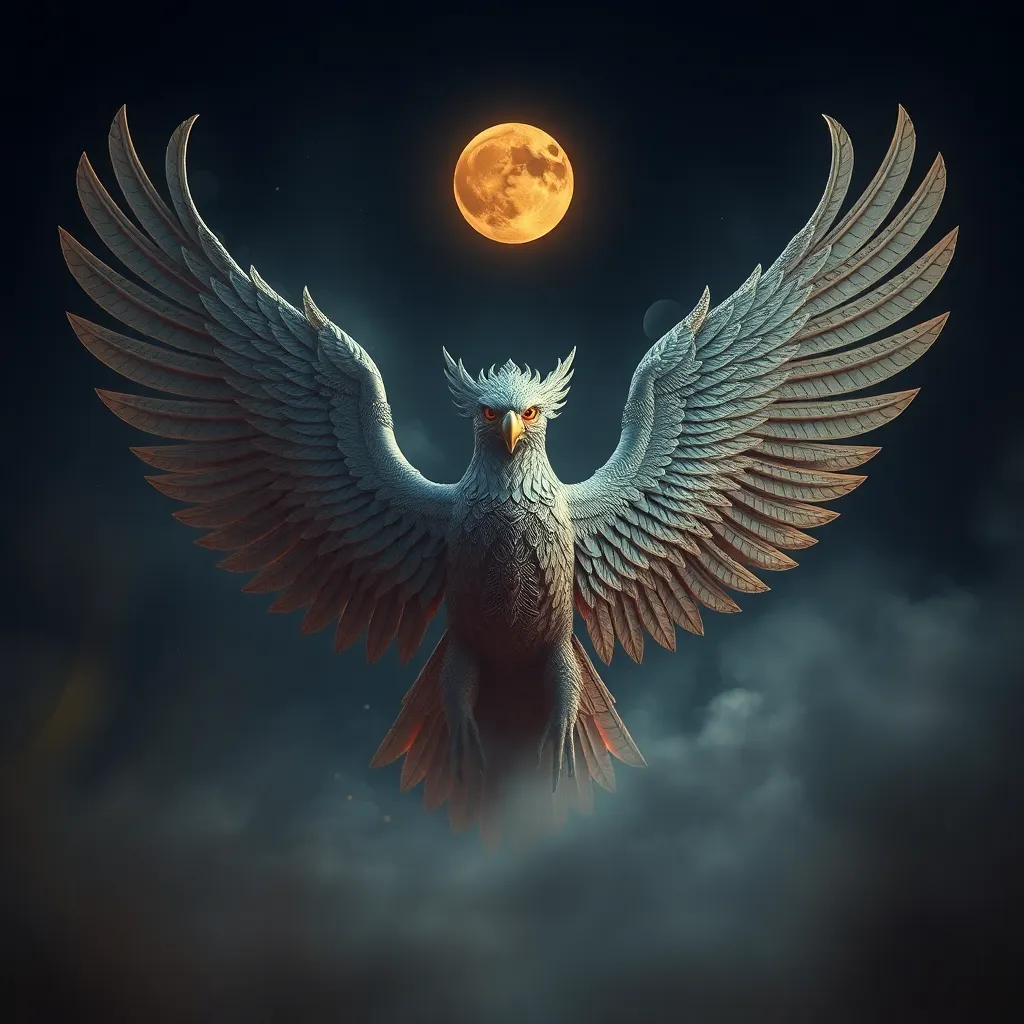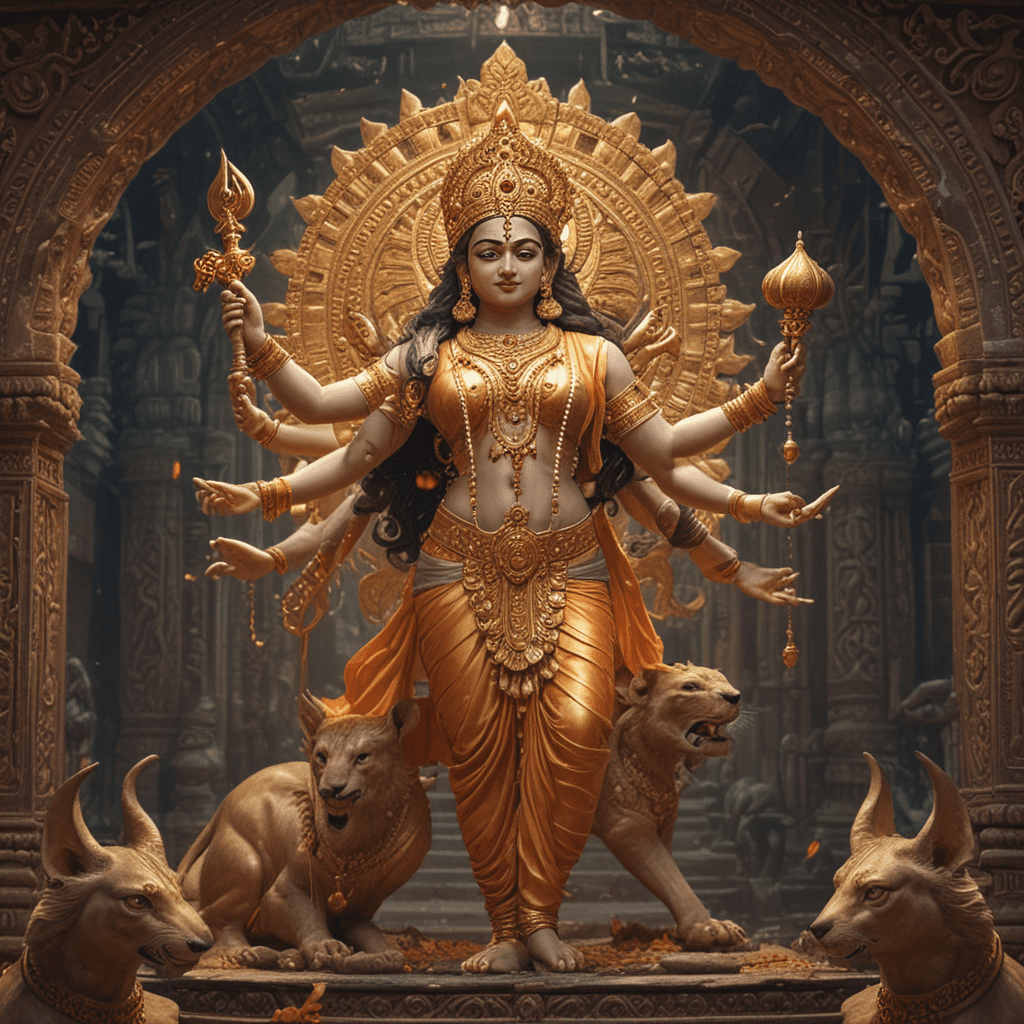The Garuda’s Legacy: How the Bird-Man Continues to Inspire and Influence Today
I. Introduction
The Garuda, a mythical bird-like creature, holds a significant place in various cultures, particularly in Hindu and Buddhist traditions. Often depicted as a powerful being, the Garuda symbolizes strength, speed, and the ability to transcend earthly limitations. This article aims to explore the enduring influence of the Garuda figure across different contexts and how its legacy continues to inspire contemporary society.
II. The Historical Context of the Garuda
A. Origins of the Garuda in Hindu mythology
The Garuda originates in Hindu mythology as the mount of Lord Vishnu, one of the principal deities of Hinduism. Described as a large, anthropomorphic bird, the Garuda is often depicted with a human body and bird-like features. In Hindu texts, the Garuda is celebrated for its valor and loyalty, playing a crucial role in various myths, including the retrieval of the elixir of immortality, Amrita.
B. The significance of the Garuda in Buddhism
In Buddhism, the Garuda is known as the vehicle of the Buddha and is considered a protector of the dharma. The creature embodies the qualities of wisdom and fearlessness. In various Buddhist texts, the Garuda is depicted as a guardian who protects the teachings of the Buddha from negative forces, further solidifying its role as a symbol of spiritual strength.
C. Garuda’s representation across Southeast Asian cultures
The Garuda figure transcends its roots in Hindu and Buddhist traditions, appearing prominently in Southeast Asian cultures. Countries such as Indonesia, Thailand, and Myanmar have their unique interpretations of the Garuda. For instance, in Indonesia, the Garuda is a national symbol, while in Thailand, it is the emblem of the royal family, showcasing its widespread cultural significance.
III. The Symbolism of the Garuda
A. The Garuda as a symbol of power and authority
The Garuda’s majestic appearance and dynamic nature have made it a potent symbol of power and authority. In various art forms and emblems, the Garuda represents kingship and sovereignty. Rulers have often adopted the Garuda as a symbol to signify their divine right to govern.
B. The association with freedom and transcendence
As a bird, the Garuda embodies the ideals of freedom and transcendence. It is often depicted soaring through the skies, free from the constraints of the earth. This aspect of the Garuda inspires individuals to seek liberation from their limitations and to strive for higher spiritual realms.
C. The role of the Garuda in spiritual and religious contexts
In spiritual contexts, the Garuda is often invoked as a protector and a guide on one’s spiritual journey. Many practitioners of Hinduism and Buddhism regard the Garuda as a source of strength and inspiration, seeking its blessings in their quest for enlightenment.
IV. The Garuda in Art and Literature
A. Depictions of the Garuda in traditional art forms
The Garuda has been a popular subject in traditional art forms, such as sculpture, painting, and textiles. Artists have depicted the Garuda in various styles, often showcasing its grandeur and majestic qualities. In India, the Garuda is commonly found in temple carvings, while in Southeast Asia, it appears in intricate batik and ikat textiles.
B. The Garuda’s representation in modern literature and media
In modern literature and media, the Garuda continues to inspire writers and creators. It appears in novels, comics, and animated series, often symbolizing themes of heroism and adventure. The Garuda’s rich mythology provides a fertile ground for storytelling, allowing contemporary storytellers to reinterpret its legacy for new audiences.
C. Analysis of artistic interpretations and their cultural significance
Artistic interpretations of the Garuda reflect the cultural values and beliefs of the societies that create them. For instance, in Indonesia, the Garuda is often portrayed with a sense of national pride, while in Thailand, its depiction emphasizes royal authority. Such representations serve as a mirror to the cultural identities and historical narratives of these regions.
V. The Garuda in Modern Popular Culture
A. The influence of the Garuda in contemporary films and television
The Garuda’s influence extends into contemporary films and television, where it is often depicted as a powerful and heroic figure. Recent movies have featured the Garuda in various roles, showcasing its abilities and character traits that resonate with modern audiences.
B. The Garuda as a brand and mascot in various industries
In addition to its cultural significance, the Garuda has been adopted as a brand and mascot by various industries. Airlines, sports teams, and businesses have utilized the Garuda’s image to convey strength, agility, and a connection to heritage. This usage highlights the creature’s ongoing relevance in a globalized world.
C. Examples of the Garuda in fashion and design
The Garuda has also made its mark in the fashion and design sectors. Designers often incorporate Garuda motifs into their collections, celebrating its beauty and symbolism. From haute couture to streetwear, the Garuda serves as an emblem of cultural fusion and creativity.
VI. The Garuda as a National Symbol
A. The role of the Garuda in Indonesian national identity
In Indonesia, the Garuda is a potent national symbol, representing the country’s strength and unity. It is prominently featured in the national emblem, Garuda Pancasila, which symbolizes the nation’s foundational principles. This association has fostered a deep connection between the Garuda and Indonesian identity.
B. Use of the Garuda in national emblems and insignias
The Garuda’s image appears in various national emblems and insignias, reinforcing its status as a symbol of national pride. In official documents, currency, and public spaces, the Garuda represents the government and the unity of the Indonesian people.
C. The impact of the Garuda on tourism and cultural heritage
The Garuda’s significance has also contributed to Indonesia’s tourism sector. Visitors are drawn to cultural sites where the Garuda is prominently displayed, such as temples and monuments. This connection to cultural heritage enhances the country’s appeal as a travel destination.
VII. The Garuda’s Influence on Contemporary Spirituality
A. The resurgence of interest in ancient mythologies
In recent years, there has been a resurgence of interest in ancient mythologies, with many individuals seeking to connect with their spiritual roots. The Garuda, as a symbol of power and transcendence, resonates strongly with those exploring spiritual practices drawn from these traditions.
B. The Garuda’s role in modern spiritual practices and beliefs
Many modern spiritual practices incorporate the Garuda into rituals and meditative practices. Its image is used in altars and spiritual symbols, serving as a reminder of the strength and wisdom that lies within each individual.
C. How the Garuda inspires personal growth and transformation
The Garuda’s narrative of overcoming obstacles and achieving greatness inspires personal growth and transformation. Individuals often look to the Garuda as a source of motivation in their personal journeys, embodying the qualities of resilience and courage.
VIII. Conclusion
The legacy of the Garuda is multifaceted, reflecting its historical, cultural, and spiritual significance across various societies. Its imagery and symbolism continue to inspire and influence modern culture, from art and literature to national identity and personal growth. As cultures evolve, the Garuda remains a relevant and powerful figure, reminding us of our shared heritage and the timeless values of strength, freedom, and transcendence.
In summary, the Garuda’s ongoing relevance in today’s society highlights the importance of mythological figures in shaping our understanding of identity and spirituality. As we look to the future, the Garuda will undoubtedly continue to inspire and influence generations to come.




